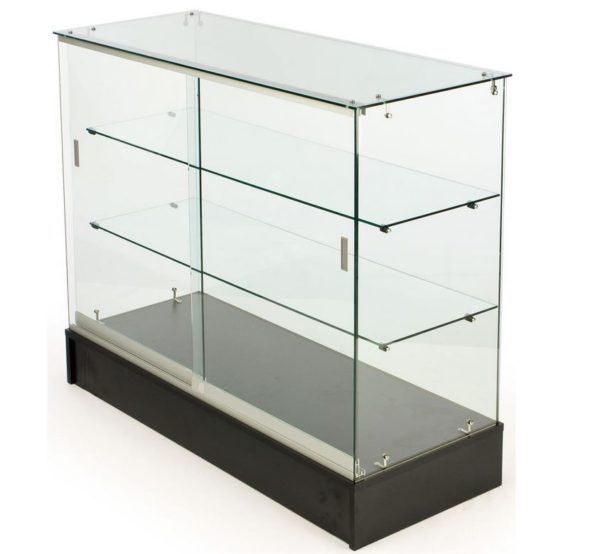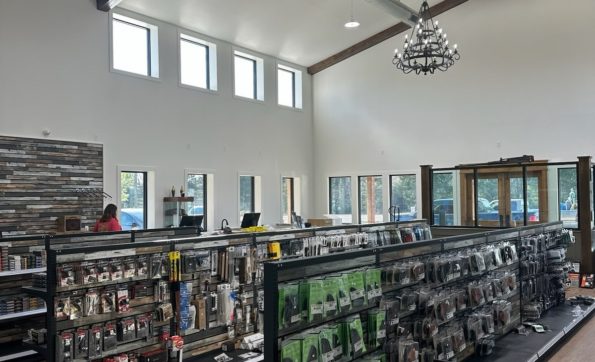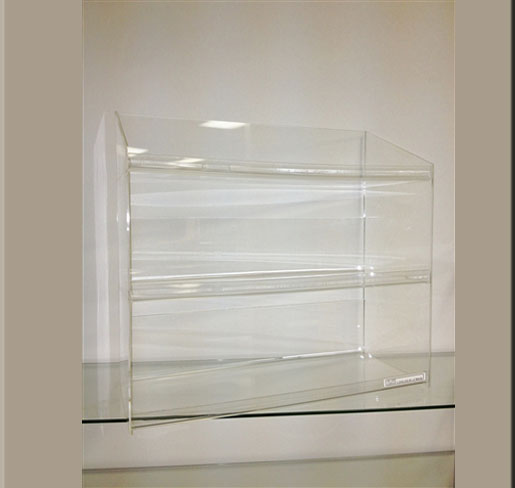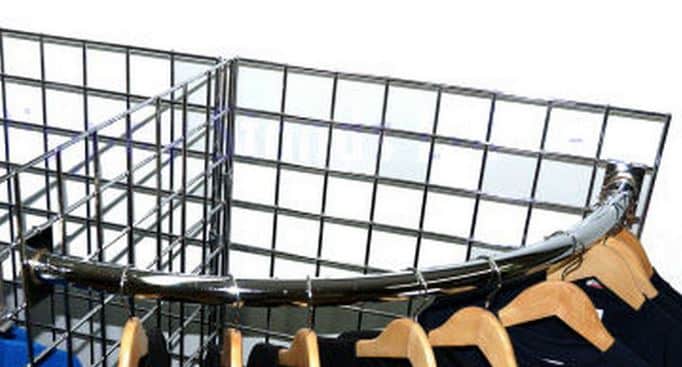In the ever-changing landscape of retail, the way products are displayed and showcased has a
significant impact on consumer behavior. Store fixtures, structures, signage, and displays used to present merchandise have undergone a remarkable evolution over the years.
From simple shelves and counters to interactive digital displays, store fixtures have transformed the
retail experience, enticing customers and shaping their purchasing decisions.
In this guide, our store fittings experts here at NDSF will explore the fascinating
journey of store fixtures and how they have adapted to meet the demands of modern consumers.
Before we get into the real details, let’s start with the takeaway so you can start learning straight away
about how store goods have been displayed over time.
Store fixtures have transformed the retail experience and shaped purchasing decisions. In the
early days, store fixtures were handmade and focused on durability and practicality. Visual
merchandising became important in the late 19th century, with adjustable shelving, glass
display cases, and lighting.
Ok so with the mini answer covered, let’s start finding out more about this world of retail stock display by
discovering more about where it all began.
The Early Days: Functional Simplicity
In the early days of retail, store fixtures served as primarily functional, laid the foundation for the modern
retail industry, and influenced the development of visual merchandising techniques that are still widely
used today.
Basic wooden shelves, counters, and display cases were used to showcase products and to make
transactions smooth and seamless.
Historically, these fixtures were often handmade, with a focus on durability and practicality rather than
their looks
Their main purpose was to efficiently present merchandise and crucially, allow customers to browse
with ease.
The Rise of Visual Merchandising
As retail competition hotted up, merchants realized the importance of creating visually appealing
displays to capture customers attention.
In the late 19th century, with the advent of mass-produced goods, retailers began embracing the
concept of visual merchandising.
Store fixtures took on new forms, incorporating elements such as adjustable shelving, glass display
cases, and lighting to showcase products more effectively.
During this period, department stores and retail pioneers like Marshall Field and John Wanamaker in
the United States and Selfridges in the United Kingdom revolutionized the retail industry by introducing
innovative store layouts and displays.
They recognized the importance of visual merchandising and the strategic use of store fixtures to
showcase products and attract customers.
In the late 19th century, Marshall Fields in Chicago, Illinois, gained recognition for its elaborate window
displays and organized interior layout.
They utilized various store fixtures such as clothing racks, shelving units, and display cases to create
visually appealing product presentations.
Similarly, Selfridges opened in 1909 and is credited with introducing modern store fixtures and visual
merchandising techniques.
The founder, Harry Gordon Selfridge, made creating an inviting and stimulating shopping environment a
priority. Selfridges used innovative display cases, store fixtures, and lighting to showcase products effectively and engage customers.

The Art of Display: Store Fixtures as Marketing Tools
In the mid-20th century, store fixtures evolved into powerful marketing tools.
Retailers began to understand that the way merchandise was presented had a huge influence on
customers’ perception of its value and desirability.
To maximize this, fixtures started incorporating strategic design elements, such as color schemes,
signage, and product grouping in frameless wall cases for example, creating visually engaging displays
that enticed customers to explore further.

Display Tables
Store fixtures such as display tables were also used to highlight featured products or merchandise
collections.
These tables were typically placed at strategic locations within the store and arranged with carefully
curated items, creating visually appealing arrangements that drew customers’ attention.
Wrap stations also rose in popularity with retailers understanding the power of branded bags and other
wrapping materials for a unique experience.
Display Shelving and Racks
Store fixtures like shelving units and racks were used to organize and display merchandise.
In the mid-20th century, these fixtures were often designed with ornate details and decorative elements
to enhance the overall look and appeal of the store.
Different shelving heights and angles were used to create visual interest and make it easier for
customers to browse the products.
Macy’s flagship store in Herald Square, New York City, is renowned for its elaborate and eye-catching
window displays. These displays incorporated carefully curated merchandise, mannequins, and props, all arranged in an artistic and thematic manner.
The creative use of shop fittings in their window displays helped to create a buzz and draw customers
into the store. This marked the beginning of a more deliberate and creative approach to store fixture design.

The Digital Age: Interactive and Personalized Experiences
With the rise of technology and the internet, the retail landscape underwent an unprecedented shift!
Store fixtures embraced digital innovation to create interactive and personalized shopping experiences.
Touchscreen displays, video walls, and interactive kiosks became common sights in modern stores,
allowing customers to explore product information, access customer reviews, and even place orders
directly from the fixtures themselves.
These digital store fixtures bridge the gap between online and offline shopping, enhancing the overall
customer journey.
Flexible and Adaptive Designs
In today’s fast-paced retail environment, adaptability and flexibility have become crucial for store
fixtures.
Retailers need fixtures that can easily be reconfigured to accommodate changing merchandise
assortments, seasonal displays, and promotional campaigns.
Updated materials that replaced the high-maintenance glass of previous decades such as acrylic
display cases began to be more popular with this more adaptive way of displaying goods.
Modular fixtures with interchangeable components have gained popularity, allowing retailers to quickly
and efficiently adapt their store layouts to meet evolving customer needs.
These systems consist of interchangeable components such as slatwalls, that can be assembled and
reassembled to create various layouts and displays.
Other modular shelving units with adjustable shelves such as gondola shelving and fixtures can be
rearranged to accommodate different product sizes and configurations.

Flexible Display Options
Shop fittings now provide more flexibility in terms of display options.
For instance, the use of adjustable gridwalls and gridwall hooks, brackets, and rails allows retailers to
modify the positioning and arrangement of products easily.
This adaptability enables them to change product displays frequently to keep up with evolving trends or
seasonal promotions.
This flexibility enables stores to create fresh and engaging displays, keeping customers interested and
coming back for more.

Mobile and Portable Fixtures
Portable shop fittings have become popular as they allow for greater flexibility in retail environments.
Examples include mobile display racks, rolling shelves, and collapsible clothing rack fixtures.
These portable fittings can be easily moved and rearranged to adapt to changing needs, whether it’s
rearranging store layouts or taking displays to trade shows or pop-up events.
Sustainability and Eco-Friendly Fixtures
As environmental concerns become increasingly important, retailers are embracing sustainable store
fixture solutions.
Materials such as reclaimed wood, recycled plastics, and eco-friendly finishes are being used to create
fixtures that align with eco-conscious consumer values.
Energy-efficient lighting systems and smart sensors are also more and more being incorporated into
fixtures to reduce energy consumption and minimize environmental impact.
These sustainable store fixtures not only appeal to environmentally conscious shoppers but also
contribute to the overall brand image and reputation.
The Future: Seamless Integration of Technology
Looking ahead, the future of store fixtures may lie in the seamless integration of technology into
physical retail spaces according to recent reports.
Augmented reality (AR) and virtual reality (VR) are expected to play significant roles, allowing
customers to visualize products in their homes or virtually try them on before making a purchase.
IoT (Internet of Things) technology will enable fixtures to gather real-time data, enabling retailers to
personalize the shopping experience and optimize store layouts for maximum efficiency.
Advancements in artificial intelligence (AI) may also lead to intelligent fixtures that can make
recommendations based on customer preferences and behaviors, further enhancing the personalized
shopping experience.
The Evolution Of Store Fixtures – The wrap
The evolution of store fixtures is a testament to the ever-changing nature of retail.
From humble wooden shelves to high-tech interactive displays, fixtures have come a long way in
captivating customers’ attention and enhancing their shopping experience.
As technology continues to advance, we can expect store fixtures to seamlessly integrate digital
innovation, sustainability, and personalized experiences, creating immersive and dynamic retail
environments that cater to the evolving needs of modern consumers.
The future holds endless possibilities for store fixtures as they continue to evolve alongside the
changing demands and expectations of the retail industry.
Here at New Discount Store Fixtures, understanding that your retail store design and setup
are the most crucial factors in maximizing sales.
With a huge range of fixtures such as Gondola Metal shelving, Display Cases, Glass Displays, Slatwall,
and Gridwall, discover some of the most competitive prices and more importantly, discover the evolution of your retail business!
